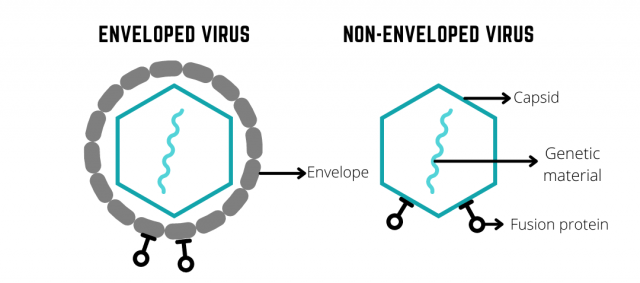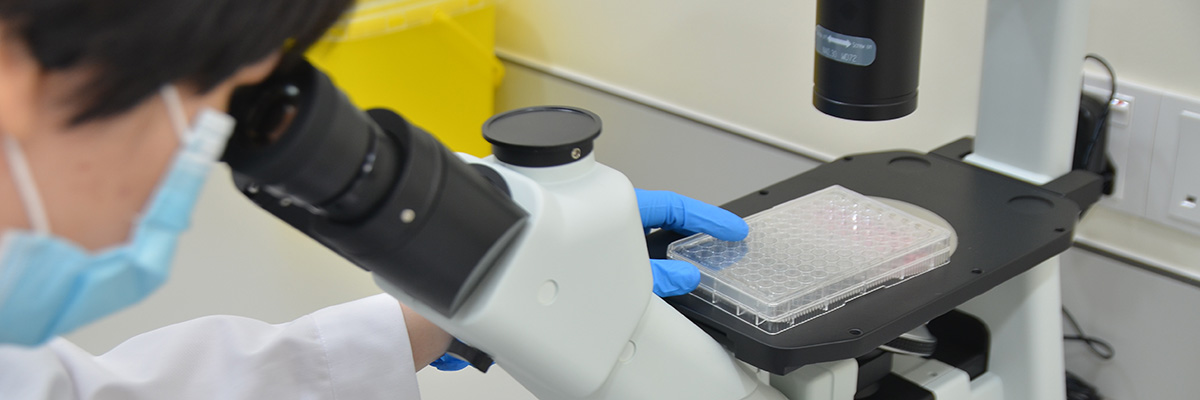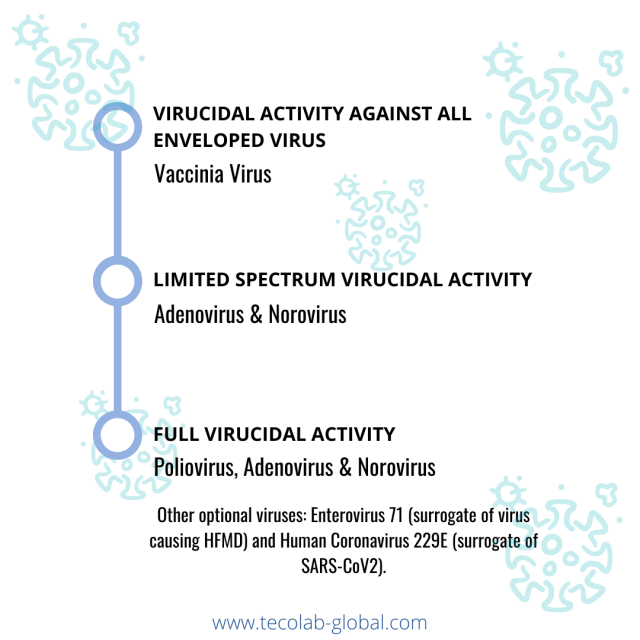“Effective against coronavirus.” — The statement we’ve all been naturally scouting for from top to bottom off of disinfectant labels during this COVID-19 pandemic. How can disinfectant manufacturers claim that their product is effective against coronavirus and other viruses? Are some viruses generally more resistant to disinfectants? To begin, let us get an understanding of the different types of viruses.
Viruses are infectious microorganisms that can only replicate inside a living cell and they can be classified into enveloped or non-enveloped virus. Enveloped virus has a lipid bilayer surrounding its capsid—a protein coat which encloses the genetic material—whilst non-enveloped virus does not. The presence of fusion proteins (FPs) allows viruses to bind onto and invade the host cells. These proteins are found on the capsids and lipid bilayer of non-enveloped and enveloped viruses, respectively. When in contact with disinfectants, the envelopes of the enveloped viruses are disintegrated relatively easily. This results in a loss of fusion proteins and hence its ability to bind onto host cells, leaving it non-infectious. On the contrary, the capsid is more resistant towards disinfectant, allowing non-enveloped viruses to retain their fusion proteins. In summary, non-enveloped viruses are more resistant towards disinfectant when compared to enveloped viruses.

With that in mind, let us further explore the possible virucidal activity—the technical term for the capability of a product to reduce the number of infectious virus particles—your disinfectant may claim. According to the European Standard EN 14476 , a disinfectant product can claim up to 3 virucidal activities depending on the product’s application, and these claims are described below.
According to EN 14476, your disinfectant only has to achieve a 99.99% inactivation against vaccinia virus in order to also be effective against coronavirus.
Virucidal Activity Against Enveloped Viruses
A disinfectant product can claim to be effective against all enveloped viruses when it is tested against the reference enveloped virus, vaccinia virus.
Limited Spectrum Virucidal Activity
A disinfectant claiming to have a limited spectrum virucidal activity must be tested against adenovirus and norovirus. With this claim, the product is considered to be effective not only against adenovirus and norovirus, but also all enveloped viruses.
Full Virucidal Activity
Disinfectant manufacturers can claim their product to have a full virucidal activity when the product has been tested against the reference non-enveloped viruses: poliovirus, adenovirus, and norovirus. Achieving a 99.99% inactivation against the 3 viruses is sufficient for the disinfectant to considered effective against both enveloped and non-enveloped viruses. Based on our experience, poliovirus exhibits the highest resistance to disinfectants.
Now, which category does coronavirus fall into?
As we know, the raging COVID-19 pandemic is caused by the coronavirus SARS-CoV-2, an enveloped virus. Hence, according to EN 14476, your disinfectant only has to achieve a 99.99% inactivation against vaccinia virus in order to also be effective against coronavirus. However, it is unsurprising if a disinfectant manufacturer wishes to actually include the phrase “effective against coronavirus” on their product to increase their appeal to the public.
According to EN 14885, which outlines the European requirements of disinfectant efficacy testing, efficacy claims against specific organisms other than those given in the European Standard shall be supported by test against those species. Put simply, a disinfectant has to be specifically tested against coronavirus in order to bear the phrase “effective against coronavirus” on the product label. TECOLAB’s microorganism library includes human coronavirus 229E—a surrogate for SARS-CoV-2—and more. Contact us today and let us assist you in increasing the competitiveness of your disinfectant in the current market.


